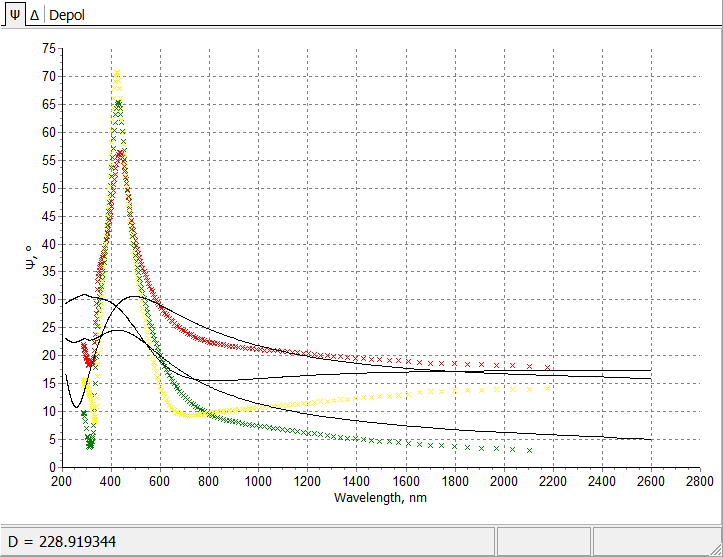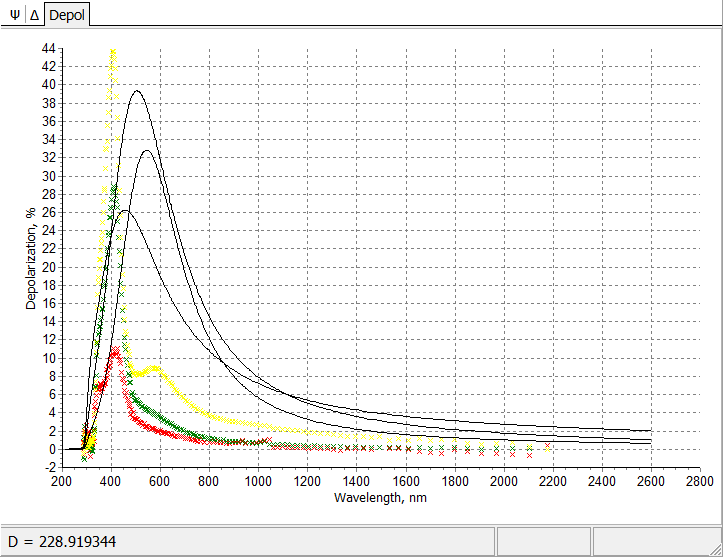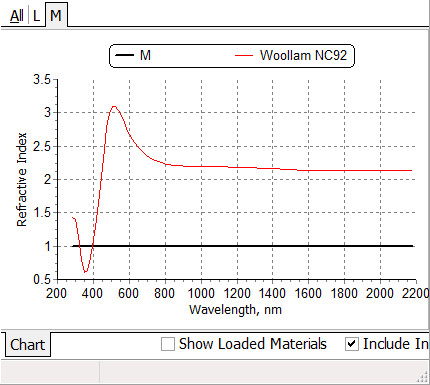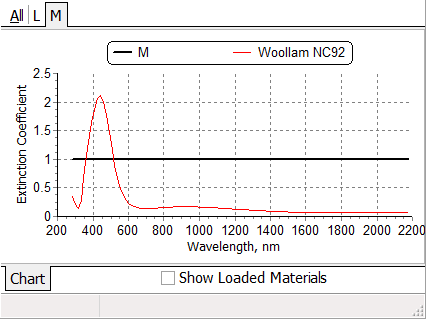| The Random Errors (advanced mode) allows you to perform a simultaneous or combined search for random and systematic errors in layer thickness, optical constants corrections and systematic inhomogeneities. This search is a multiparametric inverse problem which solution may be unstable and non unique.
The option is able to provide excellent results in complicated cases, but application of this option requires experience in solving reverse engineering problems. Example: reverse engineering of three-layer sandwiches consisting of thin silver-island films surrounded by SiO2 layers. Wavelength dependencies of optical constants of metal-island films are quite complicated. At the same time thicknesses of Ag-SiO2 and SiO2 layers are to be determined. In this complex case, Random Errors (advanced version) is to be applied. |

Fitting of experimental ellipsometric angles Psi measured at 45, 55 and 65 degrees by model angles. |

Fitting of experimental ellipsometric angles Delta measured at 45, 55 and 65 degrees by model angles. |

Fitting of experimental depolarization measured at 45, 55 and 65 degrees by model depolarization. |

Wavelength dependence of Ag-SiO2 refractive index in the course of the reverse engineering process. |

Wavelength dependence of Ag-SiO2 extinction coefficient in the course of the reverse engineering process. |
| In order to describe optical constants of Ag-SiO2 films, n(lambda) and k(lambda) models are used. These models assume arbitrary but smooth dependence of refractive index and extinction coefficient on wavelength. They should be used in most complicated cases when other models are not adequate. See the details in Unique n-k option article and in our publications.
You can find detailed descriptions of the application of this option in our papers:
|
|
Look our video examples at YouTube
OptiLayer videos are available here:
Overview of Design/Analysis options of OptiLayer and overview of Characterization/Reverse Engineering options.
The videos were presented at the joint Agilent/OptiLayer webinar.